Few paid much attention last March when the Minnesota Vikings signed Case Keenum to a one-year contract for $2 million. That move became one of the most pivotal of the 2017 season, which makes this a good time to revisit all the moves that made this season what it was -- and what it continues to be for the surviving teams.
We hereby re-grade every NFL team's 2017 offseason with the benefit of hindsight, using as a reference point the grades league insiders helped shape back in June.
You can read the whole file or quickly find your team by selecting one of the links below:
ARI | ATL | BAL | BUF | CAR | CHI | CIN | CLE | DAL | DEN | DET | GB | HOU | IND | JAC | KC | LAC | LAR | MIA | MIN | NE | NO | NYG | NYJ | OAK | PHI | PIT | SF | SEA | TB | TEN | WSH

A grades
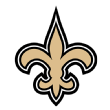
New Orleans Saints
Re-grade: A+ | Offseason grade: B-
One of the best Saints draft classes in franchise history played a leading role in New Orleans' winning the NFC South and becoming respectable on defense. Draft choices Marshon Lattimore, Ryan Ramczyk and Marcus Williams became immediate starters, while Alvin Kamara rivaled Lattimore as the biggest star of the bunch.
The Brandin Cooks trade gave New Orleans the pick used for Ramczyk. Veteran additions Ted Ginn Jr., Larry Warford, A.J. Klein, Alex Okafor and Manti Te'o were all valued contributors (Adrian Peterson was not, which is why the Saints traded him).
Even the changes Sean Payton made to his coaching staff seemed to pan out.

Los Angeles Rams
Re-grade: A | Offseason grade: C
The original grade for the Rams came with a note that it would upgrade to an A if the new head coach and new left tackle could help "salvage" Jared Goff (as if Goff were about to be run out of the league after seven starts ... which is what it felt like at times).
Head coach Sean McVay proved he wasn't too young for the job at 31. Left tackle Andrew Whitworth and free-agent center John Sullivan stabilized the line. Almost everything the Rams did worked. No first-round pick? No problem. Just grab Cooper Kupp in the third round and watch him finish with 62 receptions for 869 yards and five scores.

Minnesota Vikings
Re-grade: A | Offseason grade: C-
The Vikings got low marks back in the offseason because they paid so much for Riley Reiff and Mike Remmers and because no one, including probably the Vikings, had any idea that Case Keenum would finish second in Total QBR after tossing 22 touchdown passes with seven interceptions.
Yes, signing Keenum to a one-year, $2 million deal back in March worked out pretty well. Minnesota then used the draft to select current and/or future starters Dalvin Cook, Pat Elflein and Ben Gedeon with three of their first four picks. And when Cook was injured, the Vikings turned to Latavius Murray, who provided good value on a three-year deal that gives Minnesota a relatively pain-free out after one year.
Those moves set up Minnesota for the short and long terms, and they weren't even the biggest moves of the offseason at the time. Reiff and Remmers were the big free-agent additions, and though the price was high, the line did improve.

Jacksonville Jaguars
Re-grade: A | Offseason grade: B
Ownership's decision to bring in Tom Coughlin helped give the Jaguars an identity. The $15 million annual price tag for Calais Campbell was sky-high for a defensive lineman, but there were no regrets after he finished tied for second in the NFL in sacks with 14.5. Cornerback A.J. Bouye was another home run in free agency.
Rookies Leonard Fournette, Cam Robinson and Keelan Cole all played at least 500 snaps, while Dede Westbrook emerged as a starter late in the season. The re-grade would be an A-plus if the Jaguars had given themselves a more efficient alternative to Blake Bortles at quarterback.

Buffalo Bills
Re-grade: A- | Offseason grade: B+
The grade rises because rookie draft choices Tre'Davious White and Dion Dawkins were immediate contributors in important spots. Both players look like building blocks for new coach Sean McDermott and new general manager Brandon Beane. Fifth-round pick Nathan Peterman did not impress in two starts at quarterback, but he can still be a developmental player.
Safety Micah Hyde was the Bills' biggest investment in free agency. He started all 16 games, picked off five passes, earned a Pro Bowl berth and was named second-team All-Pro. The team's other safety addition, Jordan Poyer, matched Hyde with five interceptions, showing again that McDermott knows how to get production from a position he has coached in the past (Kurt Coleman picked off 11 passes for Carolina in 2015-16, when McDermott was the Panthers' defensive coordinator).
The decision to bring back Tyrod Taylor was obviously the right one, then and now. Buffalo traded receiver Sammy Watkins and cornerback Ronald Darby after our initial grades were published. The moves smelled of tanking, but Buffalo reached the playoffs and added picks. It helped that E.J. Gaines, acquired from the Rams as part of the Watkins trade, became a solid starter when healthy.

B grades
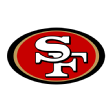
San Francisco 49ers
Re-grade: B+ | Offseason grade: C
The 49ers were among the busiest teams last offseason, so there is lots to cover.
Hiring Kyle Shanahan as head coach seemed like a logical move. Hiring a GM (John Lynch) with no experience as a personnel evaluator was risky. Declining to draft Mitchell Trubisky or Deshaun Watson when the 49ers had the chance was unconventional, especially with third-round quarterback C.J. Beathard projecting as a backup. Using a first-round choice for linebacker Reuben Foster was a boom-or-bust move for a program that needed stability. His recent arrest was concerning.
There was lot to worry about, but with Lynch landing quarterback Jimmy Garoppolo from New England for only a second-round pick, the 49ers appear to be on their way. The Garoppolo trade was executed during the season, so it is not part of the offseason re-grade. The trade does reflect positively on the 49ers' offseason decision to hire Lynch, however. The 49ers' ability to be competitive early and win games late also reflected well on Shanahan's hiring.
Marquise Goodwin wound up being a productive signing in free agency, with 962 yards and a 17.2-yard average. The price San Francisco paid for fullback Kyle Juszczyk was too steep for the vast majority of teams, but he was a piece Shanahan coveted, and he did earn Pro Bowl honors as a valued contributor. Kicker Robbie Gould also was a productive addition.
The 49ers' 2017 draft class logged more combined offensive and defensive snaps than any other team's class logged. It also provided the second-most value behind New Orleans' draft when measured by the approximate value metric developed by Pro-Football-Reference.com, with lower-profile players such as George Kittle and Adrian Colbert contributing.
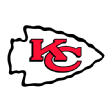
Kansas City Chiefs
Re-grade: B+ | Offseason grade: B-
The Chiefs moved aggressively to find their future quarterback by trading up for Patrick Mahomes II and still came away from the draft with the NFL's leading rusher for 2017 in third-round choice Kareem Hunt. Little-used second-round choice Tanoh Kpassagnon had two sacks in Week 17.
It's too early to evaluate the decision to part with GM John Dorsey.
Overall, the Chiefs were able to have it both ways, winning their division while building for a future with Mahomes. That is not easy to do.

Philadelphia Eagles
Re-grade: B+ | Offseason grade: B-
The Eagles got the offensive weapons Carson Wentz needed, restocked the defensive line with first-round pick Derek Barnett (among others) and picked up a needed power runner in LeGarrette Blount. With receivers Torrey Smith and Alshon Jeffery playing in all 16 games -- and with Jeffery earning an extension -- free agency feels like a success.
Philly's move to acquire cornerback Ronald Darby from Buffalo, executed after our initial offseason report card was published, has not yet produced the desired results. But the trade with Baltimore for Timmy Jernigan gave defensive coordinator Jim Schwartz an interior defender who paired nicely with Fletcher Cox.
Using a second-round pick for injured corner Sidney Jones was a luxury the Eagles afforded better than we might have expected. They became the No. 1 seed in the NFC after ranking third in Total QBR allowed (44.6) despite lingering concerns about the corner position. Signing cornerback Patrick Robinson to a one-year, $1 million deal was a big part of that. He was the team's best corner by a wide margin and a very good signing.
Kicker Jake Elliott turned out be another welcome signing.

Pittsburgh Steelers
Re-grade: B+ | Offseason grade: C+
The Steelers hit solid doubles that could turn into triples or more when selecting outside linebacker T.J. Watt and receiver JuJu Smith-Schuster with their first two picks. They re-signed Antonio Brown and used the franchise tag on Le'Veon Bell when contract talks broke down. Watt's emergence allowed the Steelers to move on from James Harrison ahead of schedule -- no big deal after Harrison signed a modest two-year deal last offseason. Free-agent Tyson Alualu was another nice addition to the front seven, and a good value.
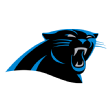
Carolina Panthers
Re-grade: B+ | Offseason grade: C
Re-signing defensive lineman Kawann Short (7.5 sacks), re-signing defensive end Mario Addison (11 sacks), bringing back defensive lineman Julius Peppers (11 sacks) and drafting running back Christian McCaffrey were big moves that produced no regrets. Pre-draft talk suggesting that McCaffrey would be a better fit in a timing-based offense seem justified, but he was still a highly productive player for Carolina.
The Panthers' expensive move to sign left tackle Matt Kalil from Minnesota was criticized at the time. Kalil started all 16 games without solving Carolina's pass-protection problems on that side of the line (Saints defensive lineman Cam Jordan's calling him "Speedbump McGee" qualified as piling on, but Kalil did struggle in their matchups).
The move to fire GM Dave Gettleman shortly before training camp will require time to evaluate.

Houston Texans
Re-grade: B | Offseason grade: D
The Texans got a low grade during the offseason because they were largely idle, and it was tough to know what impact Deshaun Watson could realistically make as a rookie. Now we know: Watson was dynamic until a freak ACL injury suffered on a non-contract practice play ended his season. He looks like he can transform the franchise.
The Texans did not do much else over the offseason, losing A.J. Bouye to division-rival Jacksonville in free agency and parting with a second-round choice as the price for unloading Brock Osweiler's contract. But if Watson picks up where he left off before the injury, Houston will consider 2017 an A-plus offseason.
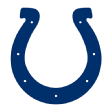
Indianapolis Colts
Re-grade: B | Offseason grade: B
The Colts did nothing spectacular during their first offseason under GM Chris Ballard. That was the plan for a team that swung and missed too many times. Indy could have used more help for its offensive line, but overpaying veteran stopgaps would not have made sense, given the overall state of the roster (though Jacoby Brissett might have appreciated it!).
First-round pick Malik Hooker picked off three passes in seven games before suffering a torn ACL. Fourth-rounder Marlon Mack showed big-play potential at running back and could project as Frank Gore's successor. Fifth-rounder Nate Hairston flashed playmaking ability at corner, collecting two sacks and an interception.
John Simon and Jabaal Sheard were productive midlevel signings in free agency, though Simon finished on injured reserve. Free-agent additions Johnathan Hankins and Al Woods helped along the defensive line as Ballard sought to build a foundation on defense.
The late move to pick up Brissett helped Indy get through the season without Andrew Luck.
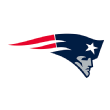
New England Patriots
Re-grade: B- | Offseason grade: A-
The Patriots' offseason looks different after the team's midseason deal with San Francisco to trade away backup quarterback Jimmy Garoppolo for a second-round pick. New England presumably could have gotten much more for Garoppolo during the offseason. Any number of circumstances could explain why the Patriots did what they did when they did it. The bottom line is that New England got little in return for Tom Brady's potential heir.
There was plenty more to digest, and a few moves will require more time to analyze: re-signing Dont'a Hightower; not re-signing Malcolm Butler; acquiring Brandin Cooks; cutting the newly acquired Kony Ealy; adding Rex Burkhead and Mike Gillislee to the offense; paying big money for Stephon Gilmore; letting Logan Ryan walk; getting excellent production from fourth-round pick Deatrich Wise; getting nothing from injured rookie Derek Rivers.
There was more good than bad for New England, and the team is back in the AFC Championship Game. The Garoppolo situation remains confounding, however, and it could haunt the Patriots for years to come.

C grades

Dallas Cowboys
Re-grade: C+ | Offseason grade: C+
The Cowboys raised the bar in 2016 by adding Dak Prescott and Ezekiel Elliott in the same draft class. The 2017 draft could only be a letdown by comparison. First-rounder Taco Charlton improved late in the season and has a chance to develop under coordinator Rod Marinelli. Sixth-rounder Xavier Woods could become the nickel corner. Undrafted quarterback Cooper Rush lit up the preseason and earned the No. 2 job behind Prescott, a bonus.
The restraint Dallas showed by letting guard Ron Leary and multiple defensive backs depart in free agency made sense from a value standpoint, but it also predictably set the Cowboys back on the field, especially when injuries affected young replacements in the secondary. Whiffing on cornerback Nolan Carroll in free agency -- signed in March, cut Oct. 11 -- did not help.
Does Dallas have the answers it needs on the roster? Chidobe Awuzie and Jourdan Lewis started in the secondary as the season winded down and should factor in 2018.
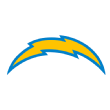
Los Angeles Chargers
Re-grade: C+ | Offseason grade: B
Re-signing Melvin Ingram was an important move that should not be overlooked. Re-signing safety Jahleel Addae worked out better than some expected. Free-agent addition Russell Okung made 15 starts at left tackle and was generally well-received. Although an injury knocked out second-round guard Forrest Lamp, third-round guard Dan Feeney started the final nine games in place of the injured Matt Slauson and should remain a contributor. Fifth-round defensive back Desmond King became the No. 1 slot defender for the Chargers.
Seventh overall pick Mike Williams was seen as an injury risk coming out of college, and injuries affected a rookie season that saw him catch 11 passes for 95 yards. History shows that the truly special wide receivers picked among the top 10 choices tend to come off the board in the top five picks or so. Teams often do not get great value picking wideouts later in the top 10, where prospects at the position are more likely to have flaws that arise in the pros. We now need to see whether Williams and Lamp emerge as the Chargers hope they will.
GM Tom Telesco took the blame for the kicking fiasco that resulted from releasing Josh Lambo in favor of rookie Younghoe Koo. Give Telesco some credit, though, for taking a chance on first-time head coach Anthony Lynn, who overcame some shaky moments early in the season to lead a late push that nearly overcame horrific play on special teams.
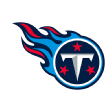
Tennessee Titans
Re-grade: C+ | Offseason grade: B
The diving, one-handed catch first-round pick Corey Davis made against New England in the divisional playoffs showed the big-play ability Tennessee was seeking when second-year GM Jon Robinson nabbed Davis with the fifth overall pick. The two scoring passes Davis made in that game were the only ones he made all season after injuries contributed to his catching only 34 passes in 11 games. The future could still be bright. Free-agent defensive backs Johnathan Cyprien and Logan Ryan were welcome additions to the secondary.
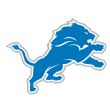
Detroit Lions
Re-grade: C+ | Offseason grade: B-
The Lions built their 2017 offseason around veteran offensive line additions T.J. Lang and Ricky Wagner. Both validated the investment at times, but each missed three games. For reasons that extend beyond the line, Detroit remained largely unproductive running the ball. Drafting zero running backs could have had something to do with that (the team selected one in 2016, using a seventh-round pick for Dwayne Washington).
The Lions found a dynamic return specialist in fifth-round pick Jamal Agnew. They might have found a dynamic receiver for the future in third-rounder Kenny Golladay. They found a potentially solid starting linebacker in first-round choice Jarrad Davis, while corner Teez Tabor and linebacker Jalen Reeves-Maybin could develop into starters next season. Free-agent additions Akeem Spence and D.J. Hayden contributed.
In the end, the Lions are a team that needs to upgrade its pass-rush and running game, same as last offseason.

Atlanta Falcons
Re-grade: C | Offseason grade: C+
The Falcons were already atop the NFC, which meant their C-plus grade from the offseason wasn't necessarily a criticism. It was more a reflection of a good team standing pat personnel-wise.
Adding first-round pick Takkarist McKinley was a big plus. The rest of the draft made fewer immediate contributions.
Hiring Steve Sarkisian to replace departing offensive coordinator Kyle Shanahan seemed risky because Sarkisian hadn't coached in the NFL since 2004 and had never called plays at that level. The offense might have been due for a regression from its historically productive 2016. Whatever the case, there was decline.
Coach Dan Quinn replaced defensive coordinator Richard Smith with Marquand Manuel, and the defense maintained the statistical efficiency it showed during the second half of last season, when Quinn took on greater oversight. That was neither a big plus nor a big minus -- kind of like the Falcons' offseason overall.

Baltimore Ravens
Re-grade: C | Offseason grade: D
Re-signing Brandon Williams and utility safety Anthony Levine worked out better than adding Jeremy Maclin and Danny Woodhead, though Woodhead, who turns 33 this month, provided a boost once he returned from injury.
First-round corner Marlon Humphrey made an immediate positive impression, easing concerns about whether Baltimore should have selected tight end O.J. Howard instead. As for the rest of the draft? The Ravens ranked 26th in snaps from players they drafted after the first round -- not necessarily a bad thing, as every team is different, but not a sign of robust contributions, either.
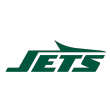
New York Jets
Re-grade: C | Offseason grade: D
The Jets got low marks last offseason because they did not address their future at quarterback and did little in free agency. Do they deserve a much higher grade in retrospect because they won five games with a surprisingly effective Josh McCown, when they could have drafted Deshaun Watson? No, but they did score in the draft with safeties Jamal Adams and Marcus Maye, who were starters from the beginning.

Tampa Bay Buccaneers
Re-grade: C | Offseason grade: A-
The Buccaneers added capable weapons for quarterback Jameis Winston. They did not have enough at running back to help balance out their offense. That was predictable but also overlooked in our initial review, which focused on the team's ability to add DeSean Jackson and O.J. Howard. Tampa also needed more pass-rush help and didn't get it.
In the bigger picture, Tampa could have been banking on too many players with question marks on their résumés, from Winston to Doug Martin to Jackson.

Cincinnati Bengals
Re-grade: C | Offseason grade: B-
The Bengals had a plan, but as one exec put it when the original grades were published, their season would hinge on whether Jake Fisher and Cedric Ogbuehi emerged as competent tackles. That did not happen, and when injuries predictably felled first-round pick John Ross (and veteran tight end Tyler Eifert, for that matter), the offense lost its way.
Fourth-round pick Carl Lawson made a positive impact with 8.5 sacks, and second-rounder Joe Mixon showed enough late in the season to suggest that good things lie ahead. It's just tough to give the Bengals the benefit of the doubt when they let top offensive linemen leave without viable replacements.
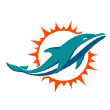
Miami Dolphins
Re-grade: C | Offseason grade: B-
The Dolphins were proactive in re-signing key players and got good production from some of them, including Cameron Wake (10.5 sacks), Kiko Alonso and Reshad Jones. Alan Branch was not as productive as anticipated, and the Dolphins' plan to run their offense through Jay Ajayi proved unsustainable from their perspective.
Free-agent addition Lawrence Timmons went AWOL early in the season and was not what the team hoped. Another veteran pickup, tight end Julius Thomas, did not regain the form he showed when Peyton Manning was his quarterback. No surprise there.
First-round pick Charles Harris was productive in spurts as a pass-rusher without breaking out, and second-rounder Raekwon McMillan, a player the team had big plans for, suffered a torn ACL in August. Fifth-rounder Davon Godchaux ended up being the team's best rookie and a nice complement to Ndamukong Suh on the defensive interior.

Washington Redskins
Re-grade: C | Offseason grade: C
The Redskins fired GM Scot McCloughan, used the franchise tag for Kirk Cousins, downgraded at wide receiver and drafted at least two starters, including first-round defensive lineman Jonathan Allen, an impact player until he suffered a season-ending foot injury. Sixth-round center Chase Roullier also looks like a starter for the future.
Terrelle Pryor made only two starts in nine games on his way to 20 receptions and one touchdown after signing a one-year deal for $6 million. Safety D.J. Swearinger was a much better value in free agency, and signing Pro Bowl linebacker Zach Brown to a one-year deal provided an upgrade. Jim Tomsula was also a solid addition to the defensive staff.
With no replacement for McCloughan and Cousins' long-term situation remaining unresolved, there's some uncertainty that continues to linger.
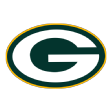
Green Bay Packers
Re-grade: C- | Offseason grade: B+
Aaron Rodgers' injury wrecked the Packers' season and did not help their ability to get full value from offseason investments. However, their personnel additions faltered independently. Martellus Bennett was unproductive even when Rodgers was healthy. The shoulder injury that bothered first-round pick Kevin King while in college was a problem for him as a rookie, contributing to a disappointing season. The Packers did find productive running backs in Jamaal Williams (fourth round) and Aaron Jones (fifth round), a big help. But for their 2017 offseason to be a success, they needed the Bennett signing to pay off. It backfired spectacularly.
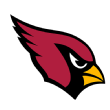
Arizona Cardinals
Re-grade: C- | Offseason grade: C-
Re-signing Chandler Jones last offseason was a necessity after Arizona acquired him before the 2016 season. Jones led the NFL in sacks with 17, which made it a little easier to stomach seeing Calais Campbell dominate for the AFC South-winning Jacksonville Jaguars after leaving the Cardinals in free agency. A four-year, $28 million deal for tight end Jermaine Gresham seemed excessive at the time -- and still does now.
Attempts to solve a lingering kicking problem led Arizona to Phil Dawson, who improved after a shaky start. The draft produced special-teams Pro Bowler Budda Baker, a second-rounder who emerged as a starting safety late in the season. Injuries forced first-rounder Haason Reddick to play out of position at times, contributing to an underwhelming rookie season for him. Arizona did get three receiving touchdowns from undrafted rookie tight end Ricky Seals-Jones, but third-round receiver Chad Williams caught only three passes.
The team basically decided to get older in making one last run with Carson Palmer and Bruce Arians. Free-agent addition Antoine Bethea played pretty well until he was injured. Karlos Dansby was a stopgap player whose age finally showed.

New York Giants
Re-grade: C- | Offseason grade: B-
The Giants' grade from last offseason seems far too high in retrospect, especially since our offseason analysis suggested they did little to address their weaknesses. Their ability to re-sign Jason Pierre-Paul while adding a couple of receiving weapons for Eli Manning seemed positive, but Pierre-Paul did not play all that well, and Brandon Marshall added nothing.
The Giants did find productive players in the draft's first two rounds, with tight end Evan Engram and defensive tackle Dalvin Tomlinson. Fourth-round running back Wayne Gallman showed promise, and the team still could get something from third-round quarterback Davis Webb.
Failing to adequately address the offensive line and overall running game cost the Giants. They could have had tackle Ryan Ramczyk instead of Engram. Would that and chasing veteran free-agent offensive linemen have saved their season? Or was this a case of the team's expensive 2016 offseason patchwork lasting only so long, under a coach who couldn't hold it all together?

D grades

Seattle Seahawks
Re-grade: D+ | Offseason grade: B
Third-round pick Shaq Griffin and bargain free-agent safety Bradley McDougald were excellent additions, but the Seahawks whiffed on running back Eddie Lacy, guard Luke Joeckel and kicker Blair Walsh. Lacy was inactive much of the season and averaged 2.6 yards per carry on 69 rushes for a team that might have made the playoffs with even average play from the position. It didn't help when the team's top draft choice, Malik McDowell, suffered a career-threatening injury during an offseason ATV accident.

Chicago Bears
Re-grade: D+ | Offseason grade: D+
The Bears invested heavily in two unproven quarterbacks without arming them with sufficient weaponry, then banked on an offensive staff featuring multiple new faces, including some without extensive NFL experience. It was no surprise the Bears went 5-11 while scoring 264 points, their lowest total since 2005 and sixth lowest in 35 seasons.
The Bears did get good value from free-agent corner Prince Amukamara. First-round quarterback Mitchell Trubisky was one of only five draft choices. He showed some promise, as did fourth-round safety Eddie Jackson, but fourth-round running back Tarik Cohen was the star of the class so far. Cohen scored as a runner, receiver and returner. He's dynamic.
If Trubisky emerges, this Bears draft class will transform the organization. There is hope but insufficient evidence, and the 2017 offseason plan for Trubisky was obviously a failure, which is why the grade remains the same.
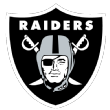
Oakland Raiders
Re-grade: D | Offseason grade: B-
The Raiders' offseason included firing offensive coordinator Bill Musgrave and using a first-round pick on cornerback Gareon Conley, who was facing a rape allegation (a grand jury declined to bring charges just as training camps were opening). Shin troubles limited Conley to two games, making his rookie season a wash. Second-round safety Obi Melifonwu also had trouble staying on the field, and by Thanksgiving, the Raiders had a new defensive coordinator. They finished last in Total QBR allowed.
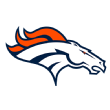
Denver Broncos
Re-grade: D | Offseason grade: C
The moves Denver made to improve its offensive line did not produce the desired results even before injuries sidelined free-agent additions Ron Leary and Menelik Watson. While it's too early to know what Denver will ultimately get from first-round pick Garett Bolles, New Orleans came out ahead in the short term with Ryan Ramczyk, the other tackle selected in the first round (12 spots after Bolles).
Broncos second-rounder DeMarcus Walker had one sack, and fifth-rounder Isaiah McKenzie struggled in the return game, fumbling six times. Denver was also wrong in thinking that it could win with Trevor Siemian behind center. The team's decision to fire several prominent coaches after just one season -- less than one season in Mike McCoy's case -- amounted to the team saying it had made critical mistakes.

Cleveland Browns
Re-grade: D | Offseason grade: C-
The Browns' 2017 offseason was marked by a big investment in Kevin Zeitler and the offensive line, striking a four-year deal with receiver Kenny Britt, passing up another shot at selecting a quarterback atop the draft and spending $16 million for the Houston Texans' second-round draft choice in the Brock Osweiler deal.
The C-minus drops to a D after seeing Deshaun Watson light up defenses while the Browns' second-round quarterback, DeShonze Kizer, finished with 11 touchdowns and 22 interceptions. The fact that Cleveland had to release Osweiler after failing to find a trading partner also hurt. Further, it was telling that when new GM John Dorsey took over in December, releasing Britt was one of his first moves.
While Kizer did reduce his turnover rate late in the season, he still became the first player since Jake Plummer in 1999 to finish a season minus-11 or worse in TD-INT differential. Finding a quarterback remains a top priority in Cleveland, even though the Browns have had multiple opportunities to find one, including last offseason. There were some positive signs from Cleveland's draft class overall, starting with Myles Garrett -- but they still went 0-16.
